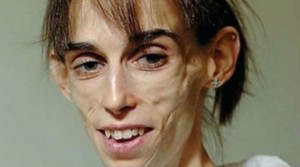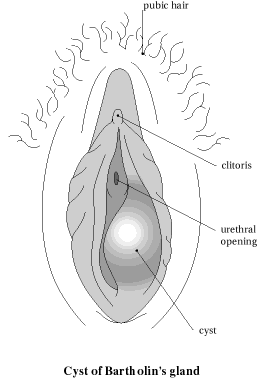Anorexia Nervosa (AN) is a relatively common condition that is said to affect around 1% of all schoolgirls and female university students in the U.S. Read on to know all about the disease, including its causes, symptoms, diagnosis and treatment.
Anorexia Nervosa Definition
Page Contents
- 1 Anorexia Nervosa Definition
- 2 Anorexia Nervosa History
- 3 Anorexia Nervosa Incidence
- 4 Who Develops Anorexia Nervosa?
- 5 Anorexia Nervosa Causes
- 6 Anorexia Nervosa Symptoms
- 7 Anorexia Nervosa Diagnosis
- 8 Anorexia Nervosa Diagnostic Criteria
- 9 Anorexia Nervosa Treatment
- 10 Anorexia Nervosa and Bulimia Nervosa
- 11 How to Prevent Anorexia Nervosa?
- 12 Anorexia Nervosa Risk Factors
- 13 Anorexia Nervosa Complications
- 14 Health Problems Associated With Anorexia Nervosa
- 15 Anorexia Nervosa Pictures
It is a kind of eating disorder that makes people suffer from an obsession about their body weight and physical appearance. This has a direct impact on the amount of food that they eat. A person with this condition refuses to eat enough food to attain or retain an extremely thin body shape. This has a direct impact on his/her health.
“AN” is considered to be a psychological condition.
Anorexia Nervosa History
The condition was described as early as 1684. However, it was not until 1870 that it was actually identified and medically reported. In 1873, the disease was named by Sir William Gull who was personal physician to Queen Victoria. But it was much later, in the 1970s, that AN began to be more popularly known. This happened due to increasing media reports about young women who were refusing to eat to maintain an ideal body shape. In 1978, the renowned psychologist Hilde Bruch published “The Golden Cage: the Enigma of Anorexia Nervosa “. The book dealt with cases of 70 young women who actually suffered from this problem. It raised great awareness of the disorder. The untimely demise of renowned singer Karen Carpenter due to AN in 1983, at only 32 years of age, further brought the ailment into public attention.
Anorexia Nervosa Incidence
The condition reportedly arises in one of out of every 200 females. Approximately 1 out of every 2000 males is said to have this disorder. As per statistics, around 90-95% patients of this disease are women.
Who Develops Anorexia Nervosa?
The condition is mainly found to affect adolescent boys and girls who wish to attain an ideal body type as projected by mass media. However, it is found to be more common in women. Females are likely to suffer from this disease more than men. Women from urban societies and upper class, especially those who are educated or working professionals, are more vulnerable to this syndrome.
Picture 1 – Anorexia Nervosa
Although this syndrome tends to arise in pre or post puberty period, it may occur at any time during the life of a person. The problem is primarily evident in teenagers and young adults. However, it may also develop in older individuals. The disorder may affect celebrities, athletes, actors, models, dancers and TV personalities who are forced to maintain a thin figure due to professional requirements. AN can also affect normal people, usually adolescent boys and girls, who try to imitate these personalities.
Anorexia Nervosa Causes
It is not known what exactly causes this condition. The development of this disorder is generally associated to a number of factors, such as:
Genetics
“AN” is supposed to be a hereditary condition. Approximately one fifth of all sufferers of this disease are found to have a relative who suffers or has suffered from any type of eating disorder. People having a family history of anorexia are at greater risk of developing AN.
Stress
Incidents giving rise to extreme mental trauma or stress during pre or post puberty, such as failure in exams or death of a loved one, can also lead to this syndrome.
Hormonal abnormalities
The disorder may also result from abnormalities in Serotonin, a chemical in the brain that is said to cause depression.
Peer pressure
These days, mass media such as TV, lifestyle magazines and newspapers give more importance to body shape. Images in television and magazines portray an ideal body image in the form of a thin, reed-like figure. Such images are glorified and projected as being ideal. People with such figures are portrayed as perfect, successful, more loved and happy. Young individuals, who crave attention, want to attain such a body type to be loved. The problem is compounded by fat people being generally ridiculed for their obese shape. Young boys and girls, even those who are thin, tend to fear that they would be similarly humiliated if they did not look “perfect.” Peer pressure is one of the most major causes for the rise in incidence of AN.
Anxiety disorder
The problem also arises in people who suffer from any type of anxiety disorder as a child.
Anorexia Nervosa Symptoms
The effects of the disease are physical as well as psychological. Some of the classic physical signs and symptoms of this condition include:
- Extreme weight loss
- Dry skin and mouth
- Thinning hair
- Fatigue
- Depression
- Low blood pressure
- Loss of bone strength
- Loss of body fat
- Osteoporosis
- Bloated
- Abnormal cardiac rhythms
- Reduced or absent menstrual periods
- Cold or inflamed hands and feet
- Yellowing of skin that also gets covered with fine hair
- Wasting of body muscles
The behavioral symptoms associated with this disorder involve:
- Have a distorted body image
- Moving food around the plate instead of having them
- Cutting foods into small pieces
- Going to the toilet immediately after meals
- Refusal to eat when other people are present
- Working out all the time, even during sickness, bad weather or an extremely busy schedule
- Using diet pills to reduce appetite
- Using diuretics or water pills to release urine
- Using laxatives and enemas to have a bowel movement
Anorexia Nervosa Diagnosis
The diagnosis for this condition involves observation of the physical symptoms and the behavioral problems associated with AN. Physicians check whether the body weight of the patient is less by 15% or more than normal, keeping factors like age and height in mind.
Doctors must perform tests to find out the actual cause of weight loss and the extent of damage resulting from the problem. Majority of these tests have to be repeated from time to time to check the health of the patient. These medical examinations may include:
- Albumin test
- Electrolyte test
- Total protein tests
- Thyroid function tests
- Urinalysis
- Kidney function tests
- Liver function tests
- CBC (Complete Blood Count)
- Electrocardiogram (ECG or EKG)
- Bone density test to detect thin bones (Osteoporosis)
Anorexia Nervosa Diagnostic Criteria
The Diagnostic and Statistical Manual of Mental Disorders (DSM), brought out by the American Psychiatric Association, clearly mentions the diagnostic criteria for this condition:
- Refusal of the patient to maintain a body weight that is considered to be normal for his/her age and height
- Having a deep fear of becoming fat, even when the person is underweight
- Refusal to understand the gravity of weight loss problems
- Absence of menstrual period for three cycles or more
The abovementioned symptoms should be exhibited by a person before he or she can clearly be classified as a sufferer of Anorexia Nervosa.
Anorexia Nervosa Treatment
The condition has several types of treatment. The type of cure depends on the stage of the condition.
Picture 2 – Anorexia Nervosa Image
If the condition is at its most severe stage and is believed to give rise to life-threatening consequences, it is seen as a medical emergency. This form of Anorexia is seen as life-threatening if the patient is found to suffer from deep psychiatric problems or physiological issues like:
- Heart rhythm disturbance
- Dehydration
- Electrolyte imbalance
The treatment of AN initially involves use of ways that help the patient get back to a normal body weight. Effective recovery from an eating disorder is only possible when the patient achieves a proper body weight and learns about right nutrition. A dietician can guide patients about proper meal plans, calorie requirements and a healthy diet.
In some cases, psychotherapy may also be used to address psychological problems caused by this disorder. Psychotherapy can involve any one of the following:
- Individual therapy – It is highly effective in helping patients deal with the thoughts and behavior associated with the condition. Sufferers can gain self-esteem and deal with negative feelings in a more positive way.
- Family-based therapy – In this process, family members are involved into the therapy to make sure that patients follow a healthy eating habit at home.
- Group therapy – It involves forming interactions between various AN sufferers under the careful observation of experienced mental healthcare providers.
Medicines are not found to be effective in treating this disorder. However, psychiatric drugs and antidepressants may help cure associated mental ailments like anxiety or depression.
Anorexia Nervosa and Bulimia Nervosa
AN is often confused with Bulimia Nervosa (BN), another condition that has been on the rise in the last few years. However, unlike AN where patients go on self-starvation mode, BN is characterized by episodes of binge-eating followed by periods of self-induced vomiting. AN patients tend to be good students, perfectionists and almost always obey their parents. However, those suffering from BN are overweight, eat high amounts of food and suffer from guilt and depression at a later stage. This mental anxiety makes them force themselves to purge. On the other hand, Anorexia Nervosa is typically characterized by reduced food intake, rigorous exercise and the fear of becoming fat.
How to Prevent Anorexia Nervosa?
There is no definite preventive measure for this disorder. Those noticing their friends or family members exhibiting signs of AN should take them to any primary care physician. A proper diagnosis can help identify this condition and prevent its gradual deterioration. Therefore, although the disorder cannot be prevented from developing its deterioration can be checked with early medical assistance.
Anorexia Nervosa Risk Factors
Certain factors can enhance the risk of getting this condition. These include:
Genetics
Some people are genetically predisposed to this ailment. Alterations in some genes can make some people more susceptible to this disorder than others.
Adolescence
Generally, adolescents and teenagers are found to be at greater risk of having this condition. This occurs partly due to hormonal changes that their bodies go through at the time of puberty. It also arises as a result of increased exposure of an insecure mind to an ideal body shape as projected by media and peers.
Gender
As already mentioned, females are found to be at greater risk of suffering from this disease. However, many boys are also being increasingly found to be exhibiting signs of AN due to increasing social pressures.
Anorexia Nervosa Complications
AN can give rise to a number of complications, such as:
- Anemia
- Cardiac problems
- Kidney ailments
- Electrolyte abnormalities (such as low sodium, potassium or chloride levels in blood)
- Absence of menstrual periods (in females)
- Reduced testosterone level (in males)
- Gastrointestinal problems (such as nausea, bloating or constipation)
- Loss of bones, leading to heightened risk of fractures in later stages of life
In acute cases, the condition may also result in death of sufferers. This may occur due to electrolyte imbalance in the body or abnormal cardiac rhythms (Arrhythmia).
Health Problems Associated With Anorexia Nervosa
A host of physical as well as mental disorders are associated with this ailment. These include:
- Anxiety disorders
- Depression
- Drug abuse
- Obsessive-compulsive disorders
- Personality disorders
If the condition leads to severe malnourishment of the patient, vital organs of the body (such as the kidneys heart and even the brain) may suffer damage. This impairment may not be completely reversible, even when the condition is brought under control.
Anorexia Nervosa Pictures
Take a look at these images to know how patients of this syndrome look like. Feel free to use these Anorexia Nervosa photos for your reference.
Anorexia Nervosa is a complicated condition that often takes a long time to recover from. Even though its symptoms may subside, patients of AN can be vulnerable to the disorder and may suffer from its recurrence during periods of acute stress. Due to this reason, it is recommended for AN patients to undergo periodic checkups or therapies during stressful periods. Proper eating habit and constant monitoring have been found to be helpful in curing even very serious cases of this disorder.
References:
http://www.ncbi.nlm.nih.gov/pubmedhealth/PMH0001401/
http://www.medicinenet.com/anorexia_nervosa/article.htm
http://www.umm.edu/altmed/articles/anorexia-nervosa-000012.htm
http://www.mayoclinic.com/health/anorexia/DS00606



